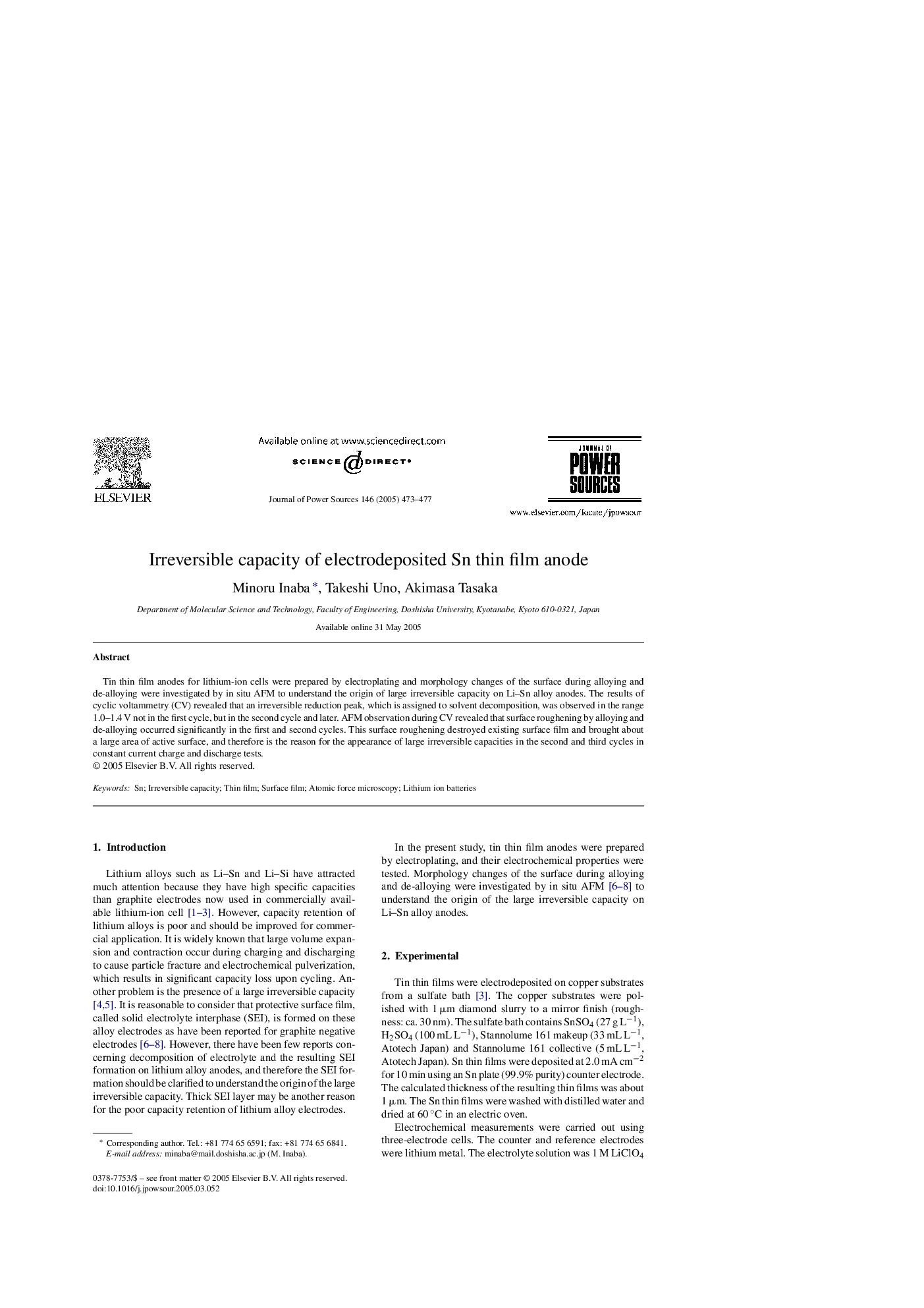| Article ID | Journal | Published Year | Pages | File Type |
|---|---|---|---|---|
| 9760365 | Journal of Power Sources | 2005 | 5 Pages |
Abstract
Tin thin film anodes for lithium-ion cells were prepared by electroplating and morphology changes of the surface during alloying and de-alloying were investigated by in situ AFM to understand the origin of large irreversible capacity on Li-Sn alloy anodes. The results of cyclic voltammetry (CV) revealed that an irreversible reduction peak, which is assigned to solvent decomposition, was observed in the range 1.0-1.4Â V not in the first cycle, but in the second cycle and later. AFM observation during CV revealed that surface roughening by alloying and de-alloying occurred significantly in the first and second cycles. This surface roughening destroyed existing surface film and brought about a large area of active surface, and therefore is the reason for the appearance of large irreversible capacities in the second and third cycles in constant current charge and discharge tests.
Related Topics
Physical Sciences and Engineering
Chemistry
Electrochemistry
Authors
Minoru Inaba, Takeshi Uno, Akimasa Tasaka,
